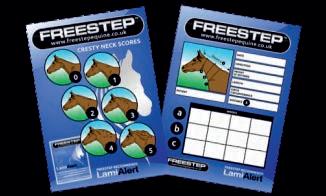
8 minute read
Basics brought to life
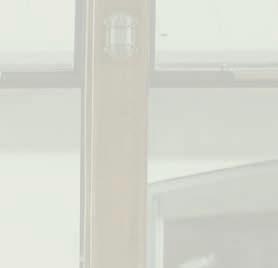



ABOVE: PRESENTED ONLINE IN 2020, THE BRITISH DRESSAGE NATIONAL CONVENTION GAVE RIDERS AN OPPORTUNITY TO WATCH THE BASICS IN ACTION.
RIGHT: A BALANCED RIDER WHO CAN GIVE CLEAR AIDS HELPS THE HORSE TO DEVELOP THE BASICS.
INSPIRED BY THE BRITISH DRESSAGE NATIONAL CONVENTION, JANE KIDD REFLECTS ON THE IMPORTANCE OF THE BASICS AND HOW THE CONVENTION GAVE AN OUTSTANDING PRACTICAL DEMONSTRATION OF THESE KEY FACTORS IN DRESSAGE.
The happy athlete – that is our goal, but how do we get there? The technical requirements are clear but what is much more di cult to grasp are the basics. Judges, trainers and riders have had the training scale drilled into them, that it is rhythm, suppleness, contact, impulsion, straightness that we must keep foremost in our minds. THE FEI DIRECTIVES
The FEI describe this training scale as: ‘the most important guideline for trainers, riders and judges’, and ‘a systematic physical education of a horse, a gymnasticising program to develop the horse’s natural physical and mental aptitudes’, and ‘developed over the centuries as a method to train horses harmoniously and to keep the horses sound’.
THE THEORY
• Rhythm: the paces are regular and in an appropriate consistent tempo • Suppleness: muscles and joints are fl exible to both directions • Contact: horse works forward with acceptance into a steady elastic feel from the mouth • Impulsion: power being generated in the hindquarters passes through the horse’s body to be controlled by the rider’s hand • Straightness: the horse remains straight on lines that are direct or curved • Collection: the transfer of the balance to increase the weight on the hindquarters as the strides shorten and lift. THE SCALES OF TRAINING

The scales of training are recognised generally and more and more people can list them, but this is only the start. Until it is much more than a list they are di cult to achieve. It is easier to understand what it is to make a square halt or shoulder in at an angle of 30degrees etc, but it is the way that these movements are done, the realisation of the basics for the level that is the essence.
What is more, when the basics are in place it is much easier to achieve the technical requirements.

RIGHT: A SESSION STARTED WITH A CHECK ON THE RHYTHM OF THE PACES AND IT WAS THE WALK THAT WAS MOST VULNERABLE TO DEFICIENCIES. FAR RIGHT: ESTABLISHING A BANANA SHAPED BEND AROUND THE INSIDE LEG THAT DEVELOPS SUPPLENESS AND IF EQUAL TO BOTH SIDES STRAIGHTNESS. BOTTOM RIGHT: CARRYING THE NECK HIGH WHILE MAINTAINING A GOOD CONTACT AND SUPPLENESS THROUGH IT.

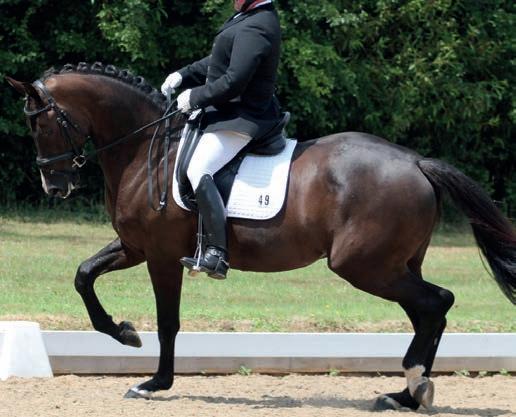
NEGLECT OF THE RIDER
he fi rst step is for the riders to have their own basics in place. hey have to help the horse not hinder it with clumsy aids and an unstable posture. he aim is to say clearly what they want with their leg seat and hand aids and to do this from a balanced and ultimately supple and infl uential seat. hese are what have to be worked on before there can be e pectations of teaching the horse much. oo often this stage has been skipped in this country and greater emphasis could be placed on it. More tests assessing the rider not the horse as in ermany and more trainers taking the risk of disturbing their clients by focusing on the way they ride the horse rather than only the horse would be helpful. many of the same points were worked on with
THE RHYTHM
hythm is the foundation for a dressage horse and any fl aws in the regularity correct se uence were not brushed over by our premier udge tephen larke. Much encouragement was given also to keep a consistent tempo speed of the rhythm when going from one length of stride to another and one movement to another. his helps to build up power and to make the horse more supple.
VISUAL OPPORTUNITY

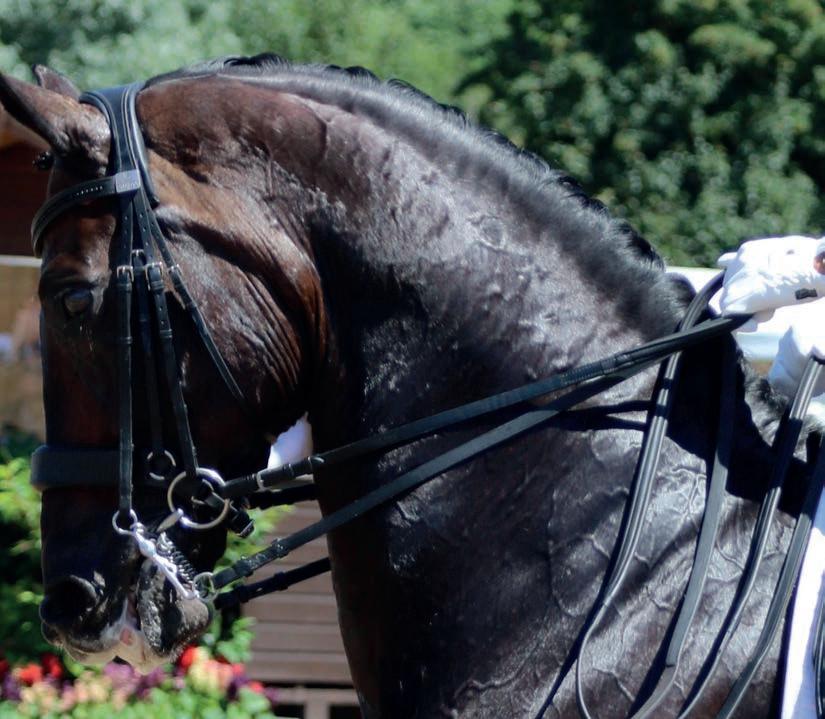
he ma ority of dressage people are practical people learning by actually seeing feeling and riding those basics. Being able to recite what they should be is the start but understanding all that each basic encompasses comes from intensive watching and listening teaching and riding. great opportunity for that intensive watching was given to us at the B onvention this year. here is a report in this maga ine and I would like to connect my words with some points that might help bring the scales come more alive. THE SUPPLENESS

uppleness was a fre uent area of attack through all the grades. I liked Ferdi ilberg’s split into natural suppleness fl e ibility of the muscles ligaments and oints and submissive suppleness the horse is su ciently through’ to react without losing the malleability softness .
It is the suppleness of the back that is so crucial to the novice horse starting to establish the basics and its correct muscle power. It takes time before there are signs that it is working. onger strides tracking up in the trot and stretching forward to the bit are the indicators that suppleness of the back
THE SYSTEM

hat systematic education was well illustrated by the obvious changes in the horses from novice to grand pri . It was clear too that many of the same points were worked on with each of the horses establishing those same but increasingly demanding basics at the level. his made the technical re uirements of a movement better.

is increasing and it is these same indicators that are looked for all the way up the grades. Suppleness is forever needing attention.
The other area of suppleness that was mentioned often at the Convention was the neck. Tackling tension in the neck (pulling back or blocking with the reins usually makes it worse is particularly important to achieving the next of the scales – contact.

THE CONTACT

Contact is made by the horse working forward to the bit and this is only possible if the rider can use the driving aids without the horse going faster. Ferdi appeared to follow the advice I was given by his ‘mentor’ Reiner Klimke, to make the horse somewhat lazy before pushing it forward. Then it can be encouraged by the rider to stretch forward, the rider keeping the contact into a relatively long and low stretch, initially for some months with the young horse and usually at the beginning and end of work sessions with most horses.
This same feeling of elastic stretchiness is what is needed in the hands whether the horse is being ridden up or forward and down.
THE IMPULSION
Impulsion was asked for frequently in terms of energising, revving the engine, making more ambitious, especially with the more advanced horses. A tool to achieve this was speeding up the hind leg action, the rider giving quicker aids and thinking faster. The success of this varied according to the strength of the horse’s connection between the hind legs and the contact felt in the rider’s hands, so that the momentum went through a supple back and neck.
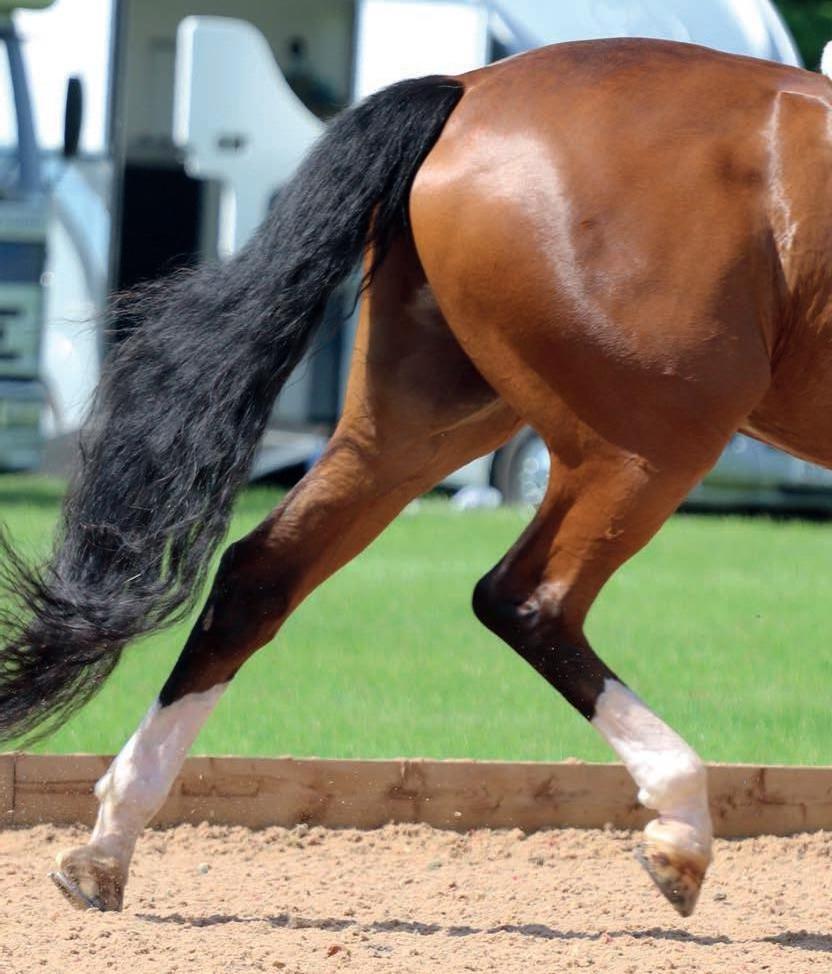
THE STRAIGHTNESS
Ferdi gave a less common valuable approach to straightness when he worked on the young horse by using serpentines. The aim was to ride towards a ‘banana’ shaped bend around the rider’s inside leg (not just a bend in the neck and that the rider worked towards making this bend the same on both sides.
THE COLLECTION
Collection is the gathering of power into shorter strides. What is critical is making sure that as the horse is brought back to carry more of its weight on its hindquarters so that the energy is not lost by slowing the strides but is even increased by using the aids positively to energise the horse.
THE OPPORTUNITY
These are glimpses of an invaluable overall picture of what the basics means and you can see for yourself on catch up with Horse & Country, you can still purchase a ticket.
For my part thank you Stephen Clarke, Ferdi Eilberg, Peter Storr and Clive Halsall as well as the commentator Bobby Hayler for giving us such a high class educational opportunity.
ABOVE: A WELL ENERGISED HIND LEG. LEFT: HIND LEG ACTION THAT WILL PROPEL THE HORSE INTO A GOOD EXTENDED TROT.





